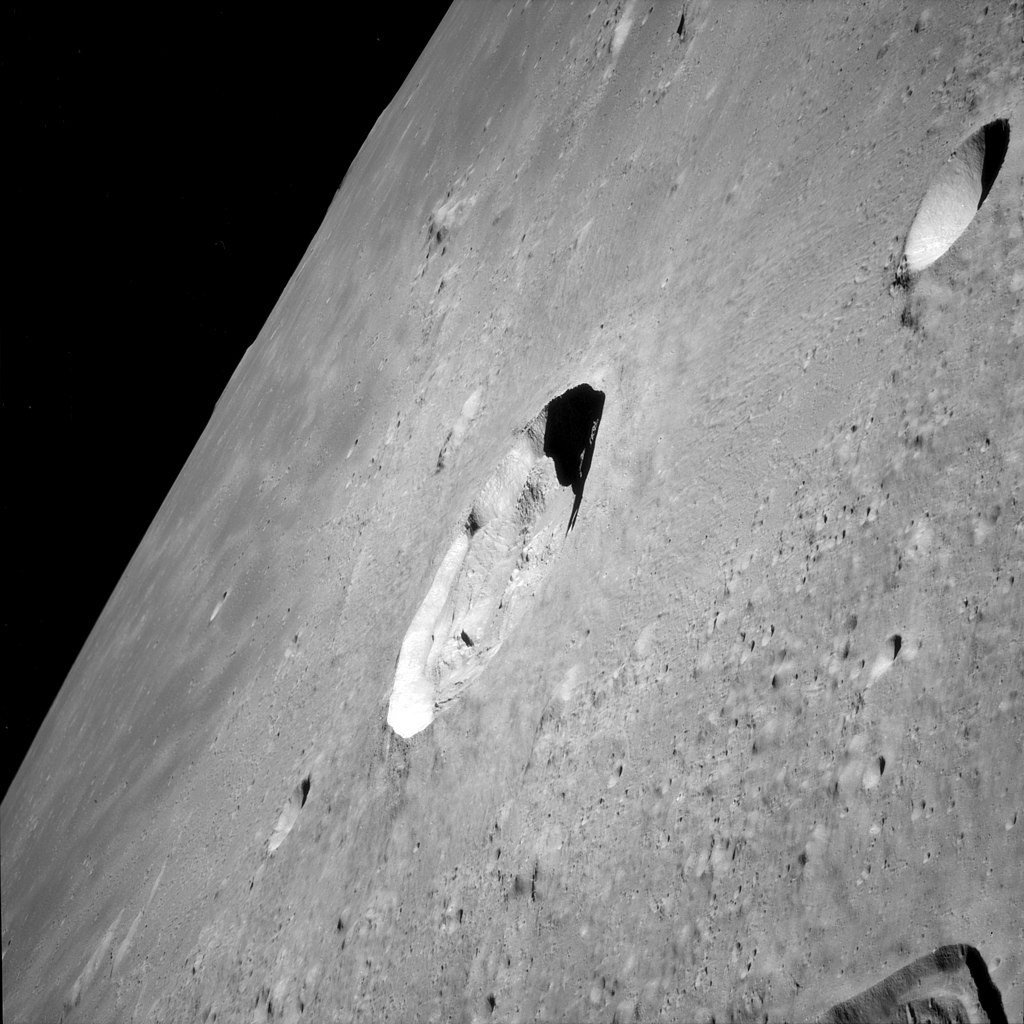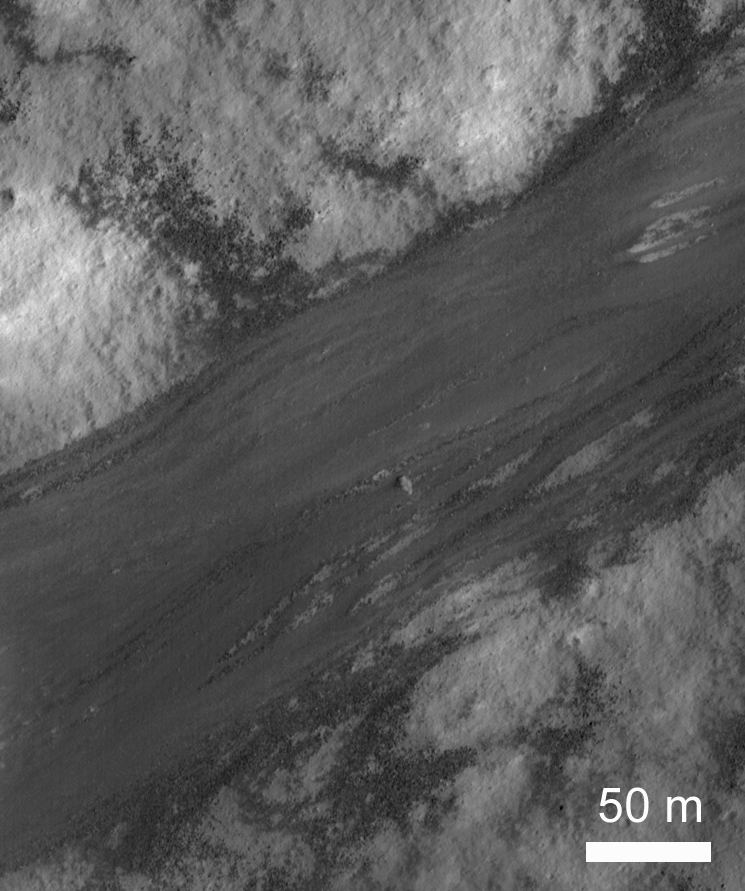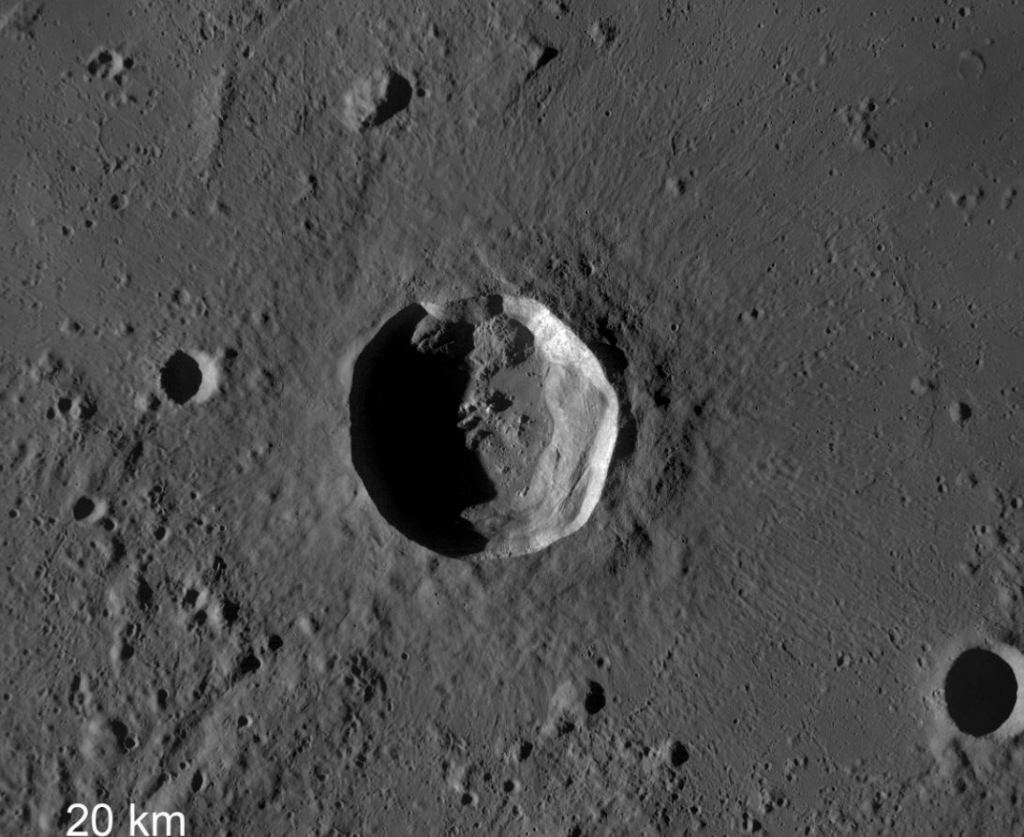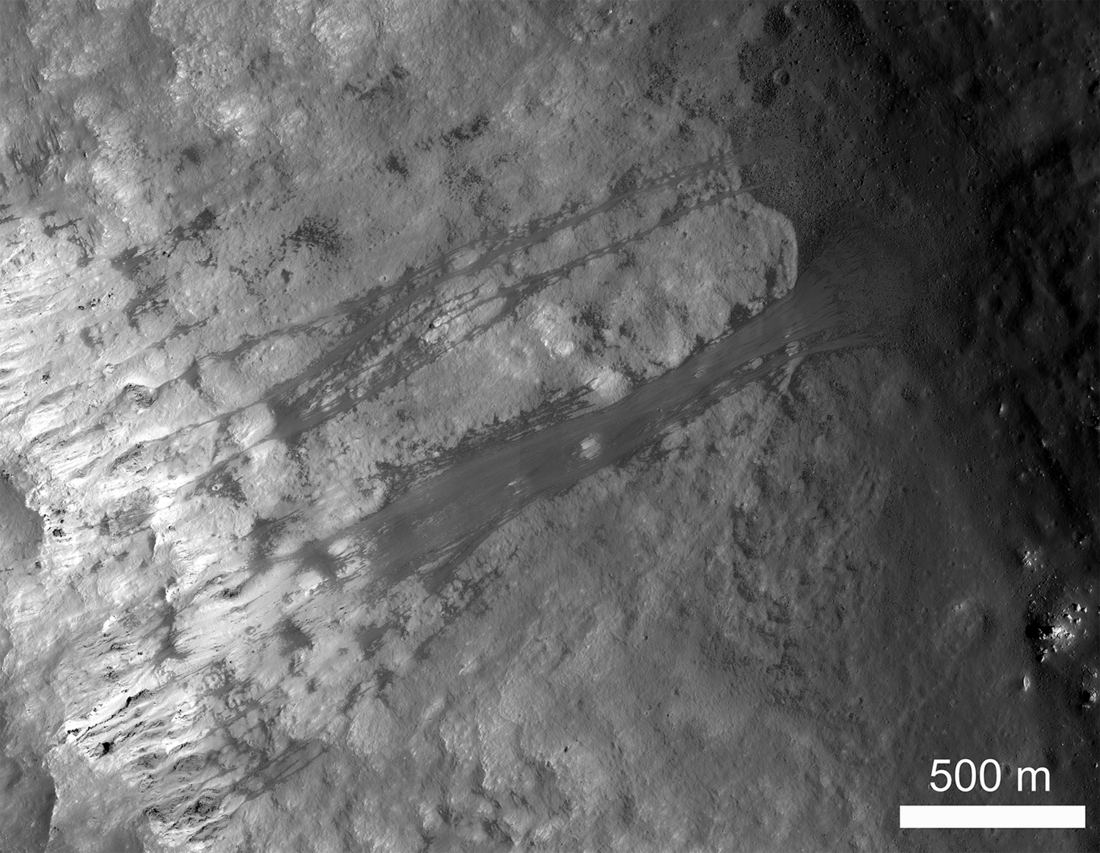Landslides bringing you down?
Landslides can be found all across our own planet Earth, on all seven continents plus the ocean floors. Similar large mass movements have been spotted around the Solar System on rocky worlds, including our companion, the Moon.
This image from the Lunar Reconnaissance Orbiter (LRO) shows an example of lunar landslides, with translational slides of regolith on the walls of Kepler Crater.
What causes landslides? On Earth, possible causes include released groundwater, wet or saturated soil, or thawing ice within soil. On the Moon, there is obviously no water to create conducive conditions for landslides or avalanches. Instead, it’s a matter of gravity.

Scientists say that loose material often moves down the steep slopes of impact craters – such as Kepler Crater, which is about 30 km (17 miles) in diameter. The observation that such landslides exist on the Moon were first made during the Apollo program, as astronauts made observations and took images from the Command Module while in lunar orbit.
Massive Ice Avalanches on Iapetus
Landslides Work Differently on Mars and Now We Know Why
LRO’s high resolution cameras (LROC) have allowed scientists to study landscapes on the Moon in great detail. Planetary scientists know now that movement on the crater walls can be a grain by grain creep where material slowly creeps down the wall over time, or it can occur as a catastrophic event in which a large amount of debris cascades down the slope.
Numerous landslides line the walls of Kepler Crater, which has a slope of about 33 degrees. In the lead image, the landslide of dark material begins about 100 meters below the rim of a narrow box canyon. The box canyon is about 50 meters wide and 300 meters long. The landslide extends about 2,300 meters from the end of the canyon to the base of the landslip.

The image above shows a closer view of the flows. The LRO team says that the overlapping nature of these small slides indicate that the overall feature may have formed over a period of time, rather than all at once.

In this image, you can see how the walls of an impact craters can slowly slump as the crater ages due to wall material moving downslope onto the floor.
You can see more images of lunar landslides in Kepler Crater at the LROC website, here and here.

